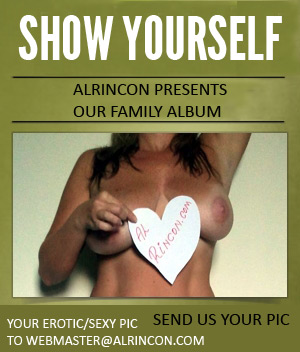Eporner HD Sex Porn Discounts Sex Games Porn Games XXX Games Hentai Games PornStar Games 3D Porn Cams Party BEST OnlyFans Free Onlyfans
Live Sex Free Live Sex Free Sex Games Páginas Porno Rose Toy Nude Celebrities Celebrity Sex Videos TikTok Porn FaceSwap Porn AI Girlfriend
Live Sex Free Live Sex Free Sex Games Páginas Porno Rose Toy Nude Celebrities Celebrity Sex Videos TikTok Porn FaceSwap Porn AI Girlfriend
Published on 2025/03/20
Both worlds, photography and gastronomy, share fundamental elements such as craftsmanship, patience, and meticulous attention to detail. In both fields, Gioacchino dedicates himself entirely to his craft, always striving for perfection in every creation while never losing sight of the beauty found in imperfection and the spontaneity of the moment.

THE NUDES OF GIOACCHINO DELL ERBA
Gioacchino Dell Erba, photographer and chef. Whether behind the camera or in the kitchen, he fully immerses himself in the expression of his creativity. For him, photography—both digital and analog—is a powerful tool that allows him to capture not just images but also emotions and deep narratives. Each shot is an opportunity to tell a story, to immortalize a unique moment that conveys a particular mood or feeling.Both worlds, photography and gastronomy, share fundamental elements such as craftsmanship, patience, and meticulous attention to detail. In both fields, Gioacchino dedicates himself entirely to his craft, always striving for perfection in every creation while never losing sight of the beauty found in imperfection and the spontaneity of the moment.













 ➡️ Let's do real, be real with Tantaly, the sex doll torso leader |






















 ➡️ Let's do real, be real with Tantaly, the sex doll torso leader |




ExtraBall
A glitch in the Matrix.
ExtraBall2
(Clicking on these links daily you support ALRNCN's work. They're collaborators or sponsors and, by visiting their sites, they like us even more)










SATIN POPALAM 2025
Come with me and let's enjoy together the new photographs shared by the photographer Satin Popalam since the last post we dedicated to her last year. You will see how much you enjoy her work.

# See photos
ExtraBall
Deleted scenes from the Lightyear movie.
This is Lana Rhodes. You can see several of her porn scenes by visiting this link
ExtraBall2
(Clicking on these links daily you support ALRNCN's work. These are collaborations or sponsorships and, by visiting their sites, they like us even more)










THE 21ST-CENTURY SHELL GAME
Reality isn’t battling filters anymore — now it’s up against pure fiction. And the wild part? Plenty of people still think they’re flirting on Instagram when they’re really chatting up a graphics card.
We’ve reached the point where the perfect girl, on perfect beaches, with perfect lighting, perfect boobs, perfect smile, and a perfect life… doesn’t exist. Not as a poetic line — I mean there’s literally nobody behind it. No model. No person. No woman smiling at her phone. Just some guy at home, dinosaur pajamas on, pumping out pictures and collecting subscriptions.

And the shocking part isn’t that AI can invent a model. That’s just entertainment. What matters is when that imaginary girl starts dropping a “thanks babe ❤️” and charging you ten euros a month to make you feel special.
When the con stops being visual and turns emotional and financial.
When it’s not about enjoying fantasy, but about selling fiction as flesh and bone to reach your wallet.
Platforms flash a link in the bio; you click expecting exclusive content from someone real, and the only real thing is the person who coded the bot and uploaded their ID to get paid. That’s the trick: you verify to monetize, then you slap on a sexy alias and post photos of a girl who doesn’t exist.
Legally, it’s your account. Morally, you’re selling smoke. Emotionally, there are people paying, convinced they’re talking to the girl in the pics. Spoiler: they’re not talking to anyone. They’re talking to an AI. Or worse — to some guy eating chips while charging subscriptions to the gullible.
Today it’s photos. Tomorrow, videos. Next, fake lives. This isn’t sci-fi, it’s a timeline: we’re watching it roll out in real time. Soon an AI “model” will handle ten thousand simultaneous conversations without yawning. She’ll wink, say your name, remember your likes, ask how you slept — and not a single human millimeter on the other end.

And hey, nothing against digital erotica or people who choose to pay. Spend your libido however you like. What really sucks is the scam.
It’s one thing to fantasize about a digital character. It’s another thing entirely to believe someone real is talking to you when it’s actually a server in Ohio.
Bottom line: the problem isn’t the tech. It isn’t AI. It’s the intention of whoever wears a human mask to take money from someone who just wanted a bit of honest attention.
Tell me it’s AI? Cool — I relax and play along. Wink so I think you’re human while you run my card? That’s got a different name.
And no, this doesn’t end here. This is the prologue. The truly interesting — and dangerous — part starts now.
So get used to it: not everything looking back at you on Instagram is alive. And sometimes, the only human in the conversation… is you.

# View images
ExtraBall
Slow-motion clip of the day.
ExtraBall2
(Clicking on these links daily you support ALRNCN's work. They're collaborators or sponsors and, by visiting their sites, they like us even more)







 CamBB.xxx
CamBB.xxxWe find the best live porn cams across many different cam sites like Streamate, Chaturbate, Cam4 and Stripchat.
 ChatSex.xxx
ChatSex.xxxWith Chat Sex you get free sex cams featuring nude cam girls you can chat with for free.















RECOMMENDED SITES
 Add your site
Add your site
- mybigtitsbabes
- Motherless
- BoobieBlog
- celeb-stalker.com
- Erotic Beauties
- sweetlicious
- Babes & Bitches
- Kanoni Net
- Silken Girls
 Add your site
Add your site💩 CrazyShit
🤪 eFukt
NudeChatGirls
👉🍑 Top XXX Pictures
Bingo Porno
Best Porn Blog Sites
 Sex Games
Sex Games
Real Amateur Porn
MrPornGeek
Comepollas
PornScn Free Porno
AI Girlfriend App
Hardcore Porn Videos
NSFW.Tools
Sex AI Chat
Porn Game
ShareAnyNudes
Teenager365

















TIK HOT VOL224
Internet trends might look harmless: a dance, a spin, some silly challenge. But when these creators make them their own, the formula changes completely.
On TikHot it’s not about copying—it’s about reinventing. Transitions end with no clothes, choreographies crank up the heat, and every move turns into a calculated tease. It’s like they take the TikTok mold and melt it down with pure erotic energy.
Here, copying isn’t plagiarism—it’s the upgraded version. And every clip proves that what’s forbidden is always more addictive than what’s allowed.

# Watch videos
For Apple users
You might have noticed that when attempting to join our Telegram Channel you get a message that flags our content as sensitive content, which ends up not letting you see anything; this means you have the parental control activated.
This means you have to go to the web version of Telegram https://web.telegram.org and log in, if you are not already. In the settings, in the "Privacy" section, find the option "Sensitive content" and activate "Disable filtering". As soon as you do, the Settings will automatically sync with the rest of your devices, including the iOS and macOS versions of the App Store.
From there you will be able to enter all the Adult Channels.
ExtraBall
The Connell twins
ExtraBall2
(Clicking on these links daily you support ALRNCN's work. They're collaborators or sponsors and, by visiting their sites, they like us even more)












PLAYING ON THE EDGE. PART 9
Can you believe the fucking Instagram algorithm is still showing me this kind of video?
It’s insane. It’s supposed to watch over things, censor, set limits… and in the end it’s like a cop handing you a gram of coke: the exact opposite of what he should be doing.
Instagram brags about controlling what we post, but it’s the platform itself that keeps the wheel turning.
And the wildest part is that these videos don’t even have hashtags, no clear captions, nothing the algorithm could normally follow.
Someone just uploads the clip, throws in a random one-liner, and yet the algorithm detects it, interprets it, and drops it in my feed over and over again.
It’s madness.
I had sworn I’d ignore them to break the loop, and here I am again.
I mean, I won’t say I’m tired of watching them, but man doesn’t live on bread alone, right?
I’d like to see other stuff too, content I can share with you.
But of course, I end up saving them… and they become material for this series.
So yeah, it’s mixed feelings: on one hand I want to stop, on the other it makes my life easier bringing them here without digging too much.
I guess that’s what happens when you’re hooked on these fucking videos thanks to the algorithm.
Anyway, I hope you don’t feel the same way and just focus on enjoying them.
Because if someone has to do the dirty work, that’s on me.

# Watch videos
For Apple users
You might have noticed that when attempting to join our Telegram Channel you get a message that flags our content as sensitive content, which ends up not letting you see anything; this means you have the parental control activated.
This means you have to go to the web version of Telegram https://web.telegram.org and log in, if you are not already. In the settings, in the "Privacy" section, find the option "Sensitive content" and activate "Disable filtering". As soon as you do, the Settings will automatically sync with the rest of your devices, including the iOS and macOS versions of the App Store.
From there you will be able to enter all the Adult Channels.
ExtraBall
Meanwhile, in a random gym...
ExtraBall2
(Clicking on these links daily you support ALRNCN's work. They're collaborators or sponsors and, by visiting their sites, they like us even more)











Contact
You can tell us whatever you want via email: [email protected]
If you prefer, you can use this contact form:
If you prefer, you can use this contact form:






THE EROTICISM OF LUDWIG DESMET
Ludwig Desmet, born in West Flanders in 1970, finds in photography an intimate dialogue between nature and the feminine essence.
Through his lens, every woman becomes a unique universe: she may appear shy and hesitant, or confident, proud and radiant; even defiant, provocative, and erotic.
His vision doesn’t try to impose, but to reveal the truth that lives in every gesture, every silence, and every spark of authenticity.

# View photos
ExtraBall
Anya Taylor-Joy in Emma.

ExtraBall2
(Clicking on these links daily you support ALRNCN's work. They're collaborators or sponsors and, by visiting their sites, they like us even more)











THE EROTIC EYE OF GB62DA3
A German creator who picked up the camera back in 1995 and never really put it down. What started as a hobby turned into a quiet obsession — a way to explore portraiture, erotic art, and the raw beauty of the human body.
He’s not a full-time professional, but his work feels anything but amateur. There’s maturity, emotion, and a way he balances light, form, and feeling that hits deeper than filters and studio tricks.
Every shot feels like a soft invitation — a slow moment of intimacy and quiet honesty, where the body speaks without trying too hard.

# See photos
ExtraBall
Candy rain.
You can watch plenty of Belle Delphine videos here
ExtraBall2
(Clicking on these links daily you support ALRNCN's work. They're collaborators or sponsors and, by visiting their sites, they like us even more)


























